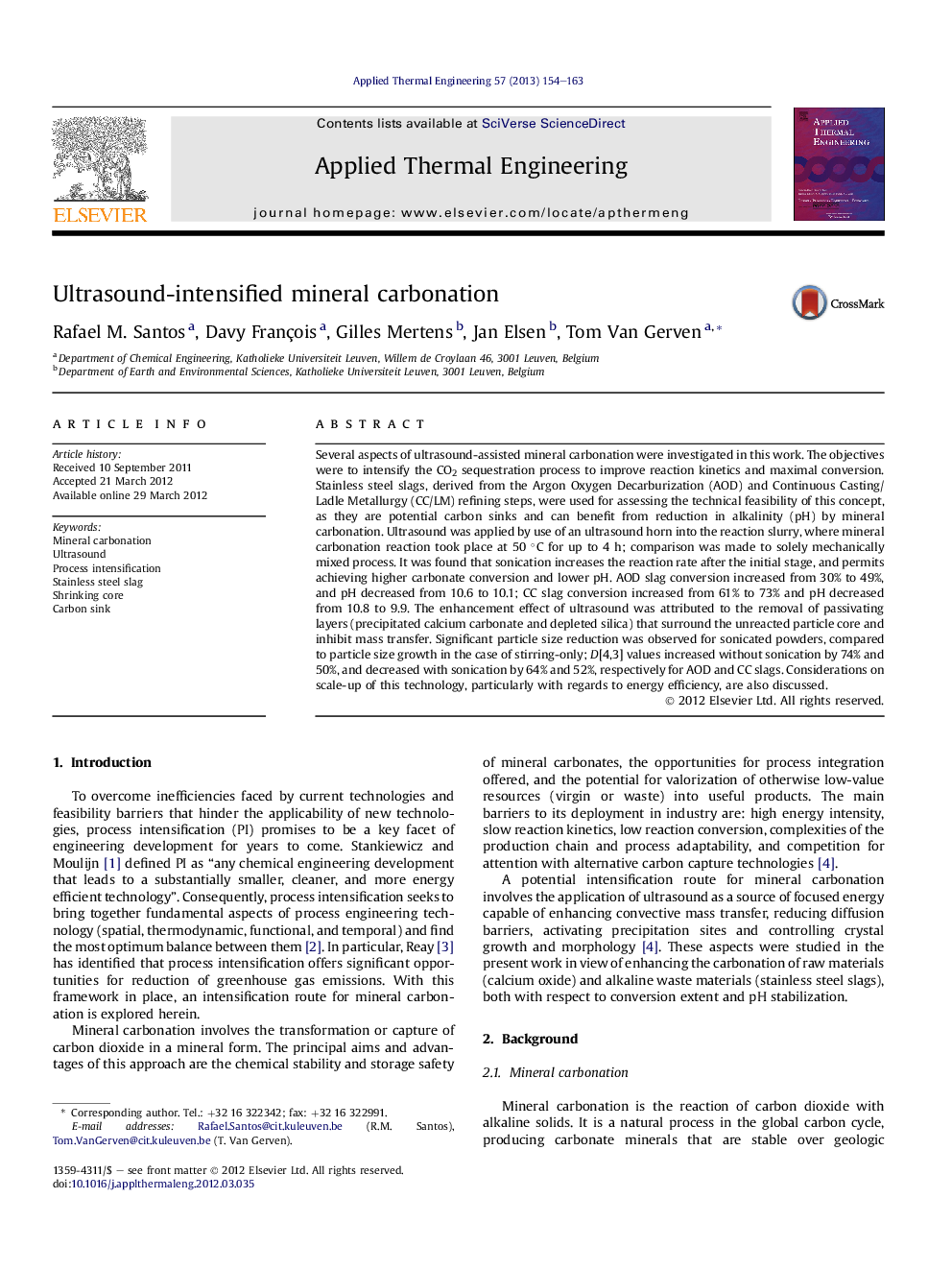| Article ID | Journal | Published Year | Pages | File Type |
|---|---|---|---|---|
| 646910 | Applied Thermal Engineering | 2013 | 10 Pages |
Several aspects of ultrasound-assisted mineral carbonation were investigated in this work. The objectives were to intensify the CO2 sequestration process to improve reaction kinetics and maximal conversion. Stainless steel slags, derived from the Argon Oxygen Decarburization (AOD) and Continuous Casting/Ladle Metallurgy (CC/LM) refining steps, were used for assessing the technical feasibility of this concept, as they are potential carbon sinks and can benefit from reduction in alkalinity (pH) by mineral carbonation. Ultrasound was applied by use of an ultrasound horn into the reaction slurry, where mineral carbonation reaction took place at 50 °C for up to 4 h; comparison was made to solely mechanically mixed process. It was found that sonication increases the reaction rate after the initial stage, and permits achieving higher carbonate conversion and lower pH. AOD slag conversion increased from 30% to 49%, and pH decreased from 10.6 to 10.1; CC slag conversion increased from 61% to 73% and pH decreased from 10.8 to 9.9. The enhancement effect of ultrasound was attributed to the removal of passivating layers (precipitated calcium carbonate and depleted silica) that surround the unreacted particle core and inhibit mass transfer. Significant particle size reduction was observed for sonicated powders, compared to particle size growth in the case of stirring-only; D[4,3] values increased without sonication by 74% and 50%, and decreased with sonication by 64% and 52%, respectively for AOD and CC slags. Considerations on scale-up of this technology, particularly with regards to energy efficiency, are also discussed.
Graphical abstractFigure optionsDownload full-size imageDownload as PowerPoint slideHighlights► Ultrasound increased CaO, AOD and CC slags mineral carbonation rates and conversions. ► Enhancement effect linked to removal of mass transfer inhibiting passivating layers. ►Carbonated particle size grew with stirring-only, and decreased with sonication. ► Lower pH of slags with greater carbonation extent can reduce heavy metal leaching. ► Considerations on scale-up strategies and energy efficiency are discussed.
